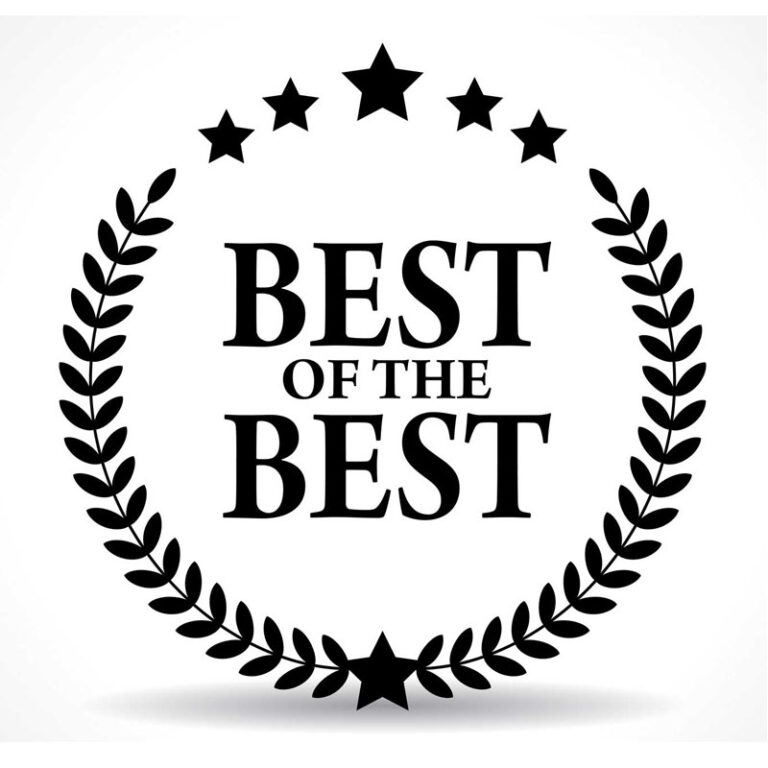Car Brands That Start With O: A Comprehensive Guide
Car Brands That Start With O: A Comprehensive Guide cars.truckstrend.com
Introduction: Unveiling the Unique "O" in the Automotive Alphabet
In the vast and diverse landscape of the global automotive industry, hundreds of brands have left their mark, each contributing to the rich tapestry of vehicle design, engineering, and cultural significance. While some letters of the alphabet boast a plethora of well-known marques, others hold a more exclusive, perhaps even enigmatic, collection. Among these, "O" stands out. Car brands that start with "O" are not as numerous as those beginning with "F" or "M," yet they represent distinct chapters in automotive history, ranging from enduring European stalwarts to iconic American classics and obscure, performance-oriented niche players.
Car Brands That Start With O: A Comprehensive Guide
This comprehensive guide delves into the fascinating world of car brands that begin with the letter "O." We will explore their legacies, innovations, market positions, and the unique challenges and considerations associated with them. Whether you’re a seasoned automotive enthusiast, a prospective buyer, or simply curious about the less common names in the car world, understanding these "O" brands offers a unique perspective on the industry’s evolution and diversity. From the practicalities of ownership to their historical impact, join us as we navigate the roads less traveled by, marked by the distinctive "O."
The Prominent "O": Opel’s Enduring European Legacy
When one thinks of a mainstream car brand starting with "O," Opel immediately comes to mind. This German automaker boasts a rich history spanning over a century, characterized by innovation, practicality, and a strong presence in the European market.
A Journey Through Time: Opel’s Evolution
Founded by Adam Opel in 1862, initially producing sewing machines and bicycles, Opel ventured into automobile manufacturing in 1899. Over the decades, it grew to become one of Germany’s largest car producers. Its long association with General Motors (GM), beginning in 1929 and lasting until 2017, saw Opel serve as GM’s primary European brand, often sharing platforms and technologies with Vauxhall in the UK. This era solidified Opel’s reputation for reliable, well-engineered vehicles that offered good value for money.
In 2017, a significant shift occurred when GM sold Opel (and Vauxhall) to Groupe PSA (now part of Stellantis). This acquisition marked a new chapter, allowing Opel to leverage PSA’s efficient platforms and electrification strategies, reinvigorating its product lineup and market strategy.
Key Models and Market Presence
Opel’s model range has consistently focused on practicality, efficiency, and modern design. Iconic models include:

- Opel Corsa: A popular supermini, known for its compact size, fuel efficiency, and urban maneuverability. It has consistently been a bestseller in its segment.
- Opel Astra: A versatile compact car, offered as a hatchback, sedan, and wagon, providing a balance of comfort, performance, and utility.
- Opel Mokka: A stylish compact SUV that embodies Opel’s contemporary design language and offers a raised driving position with urban agility.
- Opel Grandland: A larger SUV, catering to families and those seeking more space and comfort.
- Opel Insignia: A mid-size executive car, competing in a more premium segment, known for its comfort and technology.
Opel’s primary market remains Europe, where it maintains a strong presence, particularly in Germany, the UK (as Vauxhall), and other Western European countries. Under Stellantis, Opel is also exploring expansion into new markets and accelerating its transition to an all-electric lineup.
Innovation, Design, and Electrification
Opel has consistently integrated advanced technology into its vehicles, focusing on safety features, efficient powertrains, and intuitive infotainment systems. Their design philosophy, often characterized by clean lines and functional aesthetics, aims for broad appeal.
A significant aspect of Opel’s current strategy is electrification. The brand is committed to offering an electrified version of every model by 2024 and plans to become a fully electric brand in Europe by 2028. Models like the Corsa-e, Mokka-e, and various plug-in hybrid variants are at the forefront of this transition, showcasing Opel’s commitment to sustainable mobility.
Benefits and Considerations of Owning an Opel
Benefits:
- Reliability and Durability: Opel cars are generally known for their robust engineering and long-term reliability, making them a sensible choice for everyday use.
- Value for Money: They often offer a compelling package of features, quality, and performance at a competitive price point compared to some premium rivals.
- Practicality and Ergonomics: Opel designs prioritize user-friendliness, with comfortable interiors, intuitive controls, and ample cargo space.
- Wide Dealership Network: In its primary markets, Opel benefits from an extensive service and parts network, making maintenance convenient.
- Modern Technology: Newer models come equipped with advanced driver-assistance systems (ADAS), connectivity features, and efficient powertrains, including a growing range of electric options.
Considerations:
- Brand Perception: While highly respected for practicality, Opel may not carry the same premium brand cachet as some German luxury marques, which can affect resale value in certain markets.
- Driving Dynamics: While competent, some models might be perceived as more focused on comfort and practicality than outright sporty driving dynamics, though this varies by model and trim.
- Competition: Opel operates in highly competitive segments, facing strong rivals from other European, Asian, and American brands.
Challenges and Solutions
Opel faces the universal challenge of adapting to the rapid shift towards electric vehicles while maintaining profitability. Its integration into Stellantis provides access to shared platforms and R&D, which is a significant advantage. The brand’s focus on distinct design and a clear electrification roadmap are key solutions to staying competitive and relevant in the evolving automotive landscape.
The Nostalgic "O": Oldsmobile’s American Dream
Across the Atlantic, another "O" brand holds a cherished place in automotive history: Oldsmobile. While no longer in production, its legacy as one of America’s oldest and most innovative car brands continues to resonate.
A Pioneer’s Journey: From Buggies to Rocket Engines
Founded by Ransom E. Olds in 1897, Oldsmobile was a true pioneer in the American automotive industry. It was among the first to mass-produce cars using the assembly line method, even before Ford. Oldsmobile was a division of General Motors for nearly a century, from 1908 until its discontinuation in 2004.
Throughout its history, Oldsmobile was often a testbed for GM’s technological innovations. It introduced the first fully automatic transmission (Hydra-Matic) in a mass-produced car in 1940 and was a leader in the muscle car era with its powerful "Rocket" V8 engines, which gave rise to the iconic "Rocket 88" in 1949 – often considered the first muscle car.
Iconic Models and Historical Significance
Oldsmobile produced a diverse range of vehicles that became household names:
- Oldsmobile Rocket 88: A groundbreaking car that combined a lightweight body with a powerful overhead-valve V8 engine, setting the stage for performance cars.
- Oldsmobile Cutlass: One of the best-selling cars in America during the 1970s and 80s, offered in various body styles, epitomizing the American family car.
- Oldsmobile Toronado: A personal luxury coupe known for its innovative front-wheel-drive system and distinctive styling.
- Oldsmobile Aurora: A premium sedan from the brand’s later years, aiming for a more contemporary, upscale market.
Oldsmobile’s historical significance lies in its consistent role as an innovator within GM and its contribution to American car culture. It bridged the gap between Chevrolet’s mass-market appeal and Cadillac’s luxury.
Discontinuation and Legacy
Despite its rich history and innovative spirit, Oldsmobile faced challenges in the late 20th century. Brand overlap within GM’s vast portfolio, a lack of distinct identity, and declining sales ultimately led GM to announce its phasing out in 2000, with the last Oldsmobile rolling off the assembly line in 2004.
Today, Oldsmobile vehicles are cherished by collectors and classic car enthusiasts. Its legacy lives on through its contributions to automotive engineering and its enduring appeal as a piece of American history.
Challenges and Tips for Oldsmobile Enthusiasts
Challenges:
- Parts Availability: As a defunct brand, finding original or aftermarket parts can be challenging, especially for specific models or rare components.
- Specialized Mechanics: Not all mechanics are familiar with vintage Oldsmobiles, requiring owners to seek out specialists.
- Maintenance Costs: Restoration and upkeep can be expensive, particularly for rare or high-performance models.
Tips for Collectors/Restorers:
- Join Enthusiast Clubs: Oldsmobile clubs and forums are invaluable resources for finding parts, sharing knowledge, and connecting with specialists.
- Research Thoroughly: Before purchasing, understand the specific model’s common issues and parts availability.
- Budget for Restoration: Factor in the cost of professional restoration services, paintwork, engine rebuilds, and interior refurbishment.
- Consider Insurance: Specialized classic car insurance can offer better coverage and rates for vintage vehicles.
The Obscure "O": Niche and Historic "O" Brands
Beyond the mainstream presence of Opel and the historical significance of Oldsmobile, the "O" initial also encompasses a handful of highly niche or historically significant, often short-lived, automotive marques.
Oullim Motors: South Korea’s Niche Performer
Oullim Motors (formerly Proto Motors) is a South Korean manufacturer known for its high-performance sports cars. Their most notable creation is the Oullim Spirra, introduced in 2007.
- Focus: Exclusivity, performance, and handcrafted quality. The Spirra was designed to be a true supercar, offering impressive acceleration and handling.
- Models: The Spirra was offered with various engine options, including turbocharged V6 engines, aiming to compete with established European sports car brands.
- Market: Very limited production, primarily targeting performance enthusiasts in specific Asian markets and a small international clientele.
Considerations for Oullim Ownership:
- Exclusivity: Owning a Spirra means owning a rare and unique vehicle, a conversation starter.
- Maintenance: Given its limited production and specialized nature, maintenance requires expert knowledge and potentially custom-fabricated parts.
- Resale Value: While exclusive, the brand’s low profile means resale value can be highly dependent on condition and market demand among a small group of collectors.
Historic and Forgotten "O" Brands
- Oriente (Italy): An early 20th-century Italian automobile manufacturer that produced cars for a brief period (around 1904-1906). Like many pioneering brands, it contributed to the early development of the automobile but ultimately faded into history.
- Oltcit (Romania): A Romanian car manufacturer established in 1976 as a joint venture between the Romanian government and Citroën of France. They produced the Oltcit Club, a small hatchback based on a Citroën prototype. The company later became part of Daewoo Automobile Romania in the 1990s. Its cars were known for their ruggedness suitable for Eastern European conditions but also for their quirky French design and engineering.
Overall Benefits of Niche/Historic "O" Brands:
- Uniqueness: Stand out from the crowd with a vehicle that few others possess.
- Historical Value: Owning a piece of automotive history (for older brands).
- Driving Experience: Often offer a raw, unadulterated driving experience not found in modern mass-produced cars.
Overall Challenges:
- Parts Scarcity: Extremely difficult to find parts, often requiring custom fabrication.
- Lack of Expertise: Very few mechanics will have experience with these rare vehicles.
- Limited Information: Researching their history, specifications, and maintenance can be challenging due to scarce documentation.
- High Acquisition and Maintenance Costs: Expect to pay a premium for acquisition and ongoing restoration/maintenance.
Buying and Owning an "O" Brand Vehicle: Practical Advice and Actionable Insights
Whether you’re eyeing a modern Opel, dreaming of a classic Oldsmobile, or considering an ultra-rare Oullim, the approach to buying and owning an "O" brand vehicle requires specific considerations.
For New/Used Opel Vehicles
- Research Models Thoroughly: Identify the specific Opel model that fits your needs (e.g., Corsa for city, Astra for family, Mokka for SUV versatility). Look into different trim levels, engine options (petrol, diesel, electric, hybrid), and available features.
- Test Drive Multiple Options: Drive both new and used versions if possible. Pay attention to ride comfort, handling, engine performance, interior ergonomics, and noise levels.
- Inspect Used Vehicles: For pre-owned Opels, a comprehensive inspection by a trusted mechanic is crucial. Check for service history, accident damage, rust, and common wear-and-tear issues specific to the model and year.
- Understand Warranty and Service Plans: New Opels come with a manufacturer’s warranty. For used cars, consider extended warranties or service packages offered by dealerships.
- Budget for Running Costs: Factor in insurance, fuel/electricity costs, routine maintenance, and potential repair expenses. Opel parts are generally accessible and reasonably priced in their main markets.
- Consider Electrified Options: If sustainability and lower running costs are priorities, explore Opel’s growing range of electric and plug-in hybrid vehicles. Understand charging infrastructure, range, and battery warranties.
For Classic Oldsmobile Vehicles
- Define Your Goal: Are you looking for a daily driver, a weekend cruiser, a show car, or a restoration project? Your goal will dictate your budget and the type of vehicle to seek.
- Learn About Specific Models: Each Oldsmobile model (e.g., Cutlass, 442, Toronado) has its unique characteristics, common issues, and parts availability. Research forums and enthusiast communities.
- Thorough Pre-Purchase Inspection: This is paramount. Look for rust (especially in common areas like floor pans, frame, and fenders), engine and transmission condition, electrical issues, and interior wear. A classic car specialist mechanic is highly recommended.
- Verify Authenticity: If buying a rare or high-performance model (e.g., a genuine 442), verify VIN numbers, engine codes, and other identifiers to ensure it’s not a replica or clone.
- Factor in Restoration Costs: Unless buying a fully restored vehicle, anticipate significant costs for bodywork, paint, engine/drivetrain rebuilds, interior refurbishment, and chrome plating.
- Sourcing Parts: Be prepared to search online forums, specialty suppliers, swap meets, and even salvage yards for parts. Networking with other Oldsmobile owners is invaluable.
- Insurance: Obtain specialized classic car insurance, which typically offers agreed-value policies that better protect your investment.
For Niche/Rare "O" Brands (like Oullim)
- Extreme Due Diligence: Information is scarce. Rely heavily on specialized forums, direct contact with the manufacturer (if active), and international import specialists.
- Expert Inspection is Non-Negotiable: These vehicles require an expert with deep knowledge of their specific engineering and unique components.
- Logistics and Importation: Understand the complexities of importing such vehicles, including customs duties, homologation requirements, and shipping costs.
- Budget for Specialist Maintenance: Maintenance will be expensive and require highly specialized mechanics, possibly even sending the car back to the manufacturer or a renowned specialist abroad.
- Resale Market: The market for such cars is tiny. Be prepared for a potentially long sales process if you decide to sell.
Concluding Summary: The Enduring Charm of the "O"
Car brands that start with "O" may not dominate the automotive landscape in sheer numbers, but they certainly leave a lasting impression. From Opel’s unwavering commitment to practical, innovative, and increasingly electrified mobility in Europe, to Oldsmobile’s storied past as an American pioneer and innovator, and the ultra-exclusive allure of niche brands like Oullim, these marques collectively tell a compelling story of automotive evolution, engineering prowess, and cultural significance.
Owning an "O" brand vehicle, whether a modern daily driver or a cherished classic, offers a unique experience. It often means embracing reliability and value (Opel), appreciating historical innovation and a vibrant collector community (Oldsmobile), or indulging in extreme exclusivity and performance (Oullim). While challenges like parts availability or brand perception exist, the dedicated enthusiast or informed buyer can navigate these to enjoy the distinct charm and legacy that each "O" brand brings to the world of automobiles. The "O" in the automotive alphabet stands for Originality, Odyssey, and often, Outstanding character.
Price Table: Car Brands That Start With O (Representative Models)
Please note: Prices are approximate and can vary significantly based on model year, condition, trim level, location, market demand, and specific options. "New" prices refer to current or recent models; "Used/Collector" prices reflect a range for pre-owned or classic vehicles.
| Brand Name | Model (Representative) | Type/Category | Status | Price Range (New) | Price Range (Used/Collector) | Key Features/Notes |
|---|---|---|---|---|---|---|
| Opel | Corsa | Supermini/Hatchback | Active | €20,000 – €35,000 | €8,000 – €25,000 | Popular, efficient, available in electric (Corsa-e). |
| Opel | Astra | Compact Car/Hatchback/Wagon | Active | €28,000 – €45,000 | €10,000 – €35,000 | Versatile family car, growing hybrid/EV options. |
| Opel | Mokka | Compact SUV | Active | €30,000 – €48,000 | €18,000 – €40,000 | Stylish, modern design, available in electric (Mokka-e). |
| Oldsmobile | Cutlass (1970s-80s) | Mid-size Car/Muscle Car (variations) | Defunct | N/A | $5,000 – $40,000+ | Iconic American classic, wide range based on condition/model (e.g., 442 commands premium). |
| Oldsmobile | Rocket 88 (1949-50s) | Full-size Car/Early Muscle Car | Defunct | N/A | $20,000 – $70,000+ | Historically significant, pioneering V8 performance. |
| Oullim Motors | Spirra | Sports Car/Supercar | Niche/Active (Limited) | $100,000 – $200,000+ (estimated, direct sale) | $50,000 – $150,000 (rare, highly variable) | South Korean supercar, very limited production, high performance. |
| Oriente | Early Models (c. 1904) | Early Automobile | Defunct | N/A | Highly variable, often priceless (museum/auction) | Extremely rare, historical significance as early Italian car. |
| Oltcit | Club | Compact Hatchback | Defunct | N/A | $1,000 – $5,000 (rare in Western markets) | Romanian-French collaboration, known for ruggedness. |
Frequently Asked Questions (FAQ) about Car Brands That Start With O
Q1: Are there any luxury car brands that start with O?
A1: No, there are no mainstream luxury car brands that start with "O" in the same vein as Mercedes-Benz, BMW, or Lexus. While some Opel models can be well-appointed, and Oldsmobile aimed for an upscale market in its later years, neither are considered luxury brands in the contemporary sense. Oullim Motors produces high-performance sports cars, which are exclusive but not typically categorized as luxury sedans or SUVs.
Q2: Is Oldsmobile still in production?
A2: No, Oldsmobile ceased production in 2004. It was phased out by General Motors due to declining sales and brand overlap within GM’s portfolio. Its vehicles are now considered classics and collector’s items.
Q3: Where are Opel cars made?
A3: Opel cars are primarily manufactured in several plants across Europe. Key production facilities are located in Germany (Rüsselsheim, Eisenach), Spain (Figueruelas), France (Poissy, Mulhouse), and Poland (Gliwice). As part of Stellantis, Opel leverages shared production facilities across the group.
Q4: What is the most common or well-known "O" brand?
A4: Opel is by far the most common and widely recognized car brand that starts with "O," especially in Europe. Its long history and widespread market presence make it the most prominent "O" brand currently active.
Q5: Are Opel cars reliable?
A5: Yes, Opel cars generally have a good reputation for reliability and durability, particularly in their core European markets. They are designed for everyday use and are known for robust engineering and relatively low maintenance costs. Like any brand, reliability can vary by model and year, so it’s always wise to check specific model reviews.
Q6: How difficult is it to find parts for an Oldsmobile?
A6: Finding parts for an Oldsmobile can range from relatively easy for common wear-and-tear items (like brakes or filters shared with other GM cars) to very difficult for specific body panels, interior trim, or specialized engine components unique to Oldsmobile models. Enthusiast clubs, online forums, and specialty classic car parts suppliers are the best resources. Reproduction parts are also available for many popular models.
Q7: What is Oullim Motors known for?
A7: Oullim Motors (formerly Proto Motors) is known for producing the Oullim Spirra, a limited-production, high-performance sports car from South Korea. It’s recognized for its unique design, powerful engines, and status as a rare, handcrafted supercar.
Q8: Can I buy a new Oldsmobile today?
A8: No, you cannot buy a new Oldsmobile. The brand was discontinued in 2004. Any Oldsmobile you find for sale will be a pre-owned vehicle, ranging from used cars to fully restored classics.




